#aaron sowd
Explore tagged Tumblr posts
Text



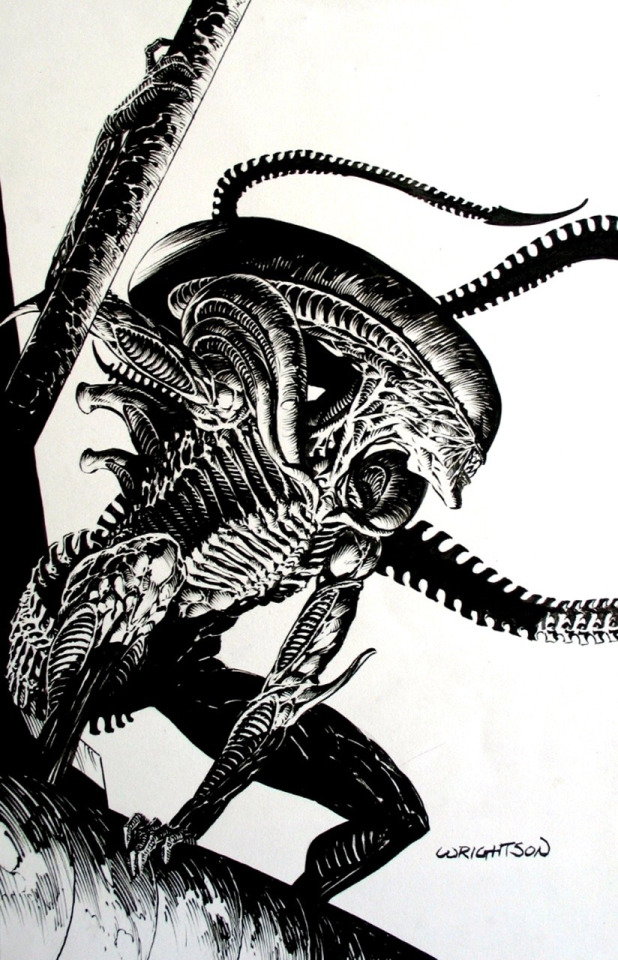
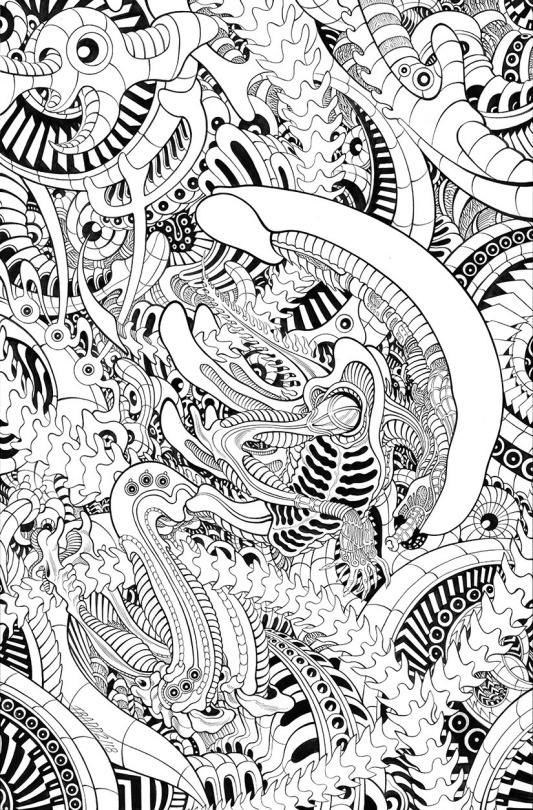

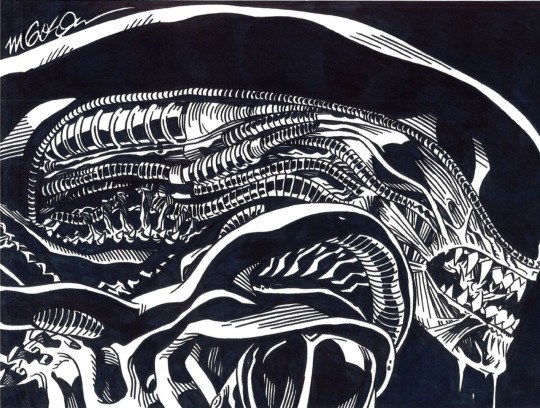
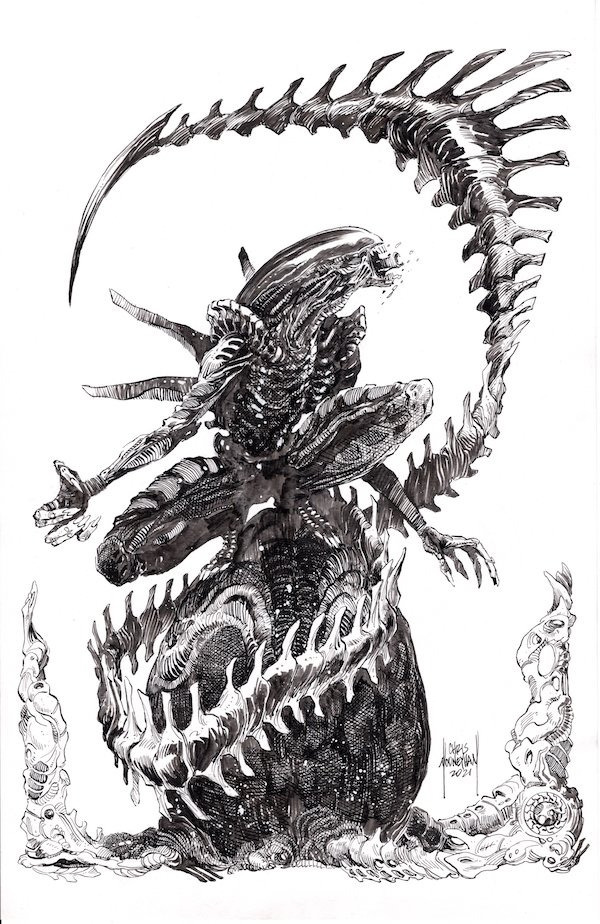
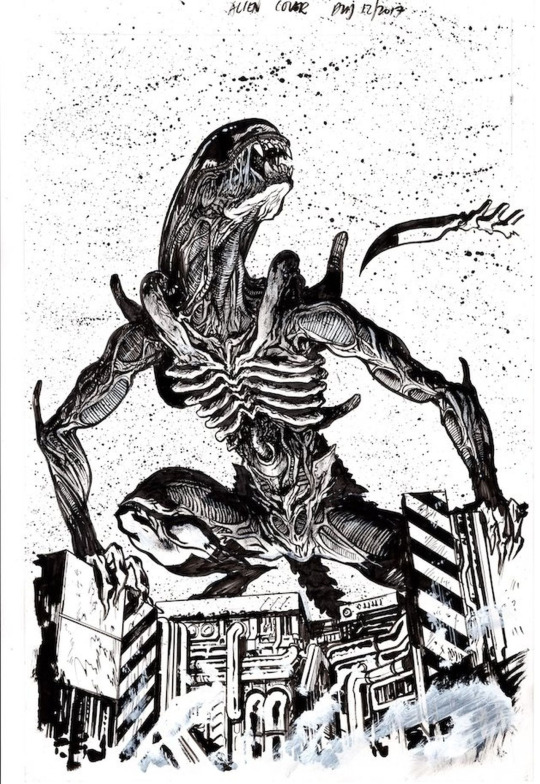
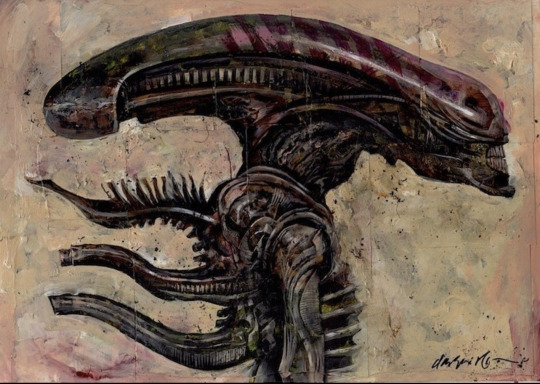
some Xenomorphs
Aaron Sowd
Dave Dorman
Kyle Hotz
Bernie Wrightson
Tradd Moore
Walt Simonson
Michael Golden
Chris Mooneyham
Daniel Warren Johnson
Dave McKean
#Xenomorphs#Aaron Sowd#Dave Dorman#Kyle Hotz#Bernie Wrightson#Tradd Moore#Walt Simonson#Michael Golden#Chris Mooneyham#Daniel Warren Johnson#Dave McKean#Alien#Aliens#Movies#Movie Monsters#Master Class#Comics#Art#Illustration
58 notes
·
View notes
Text
Batman: No Man's Land: Batman: Harley Quinn (Story #22)
Continuing on in No Man's Land with the other character find of 1999: Harley Quinn! Yup, we this is how DCAU Harley Quinn was turned into the long running we love today.
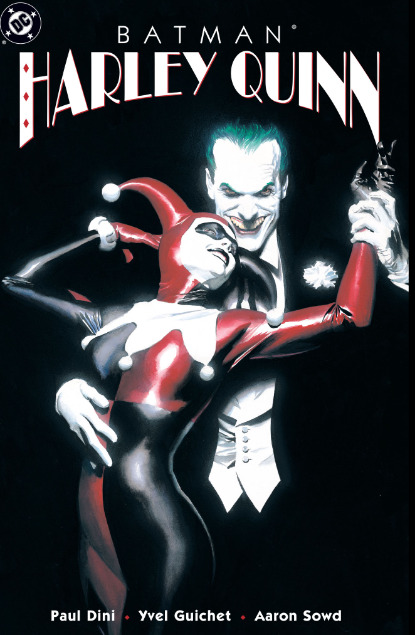
This comic opens on everyone's favorite love interest to Harley: Poison Ivy! The plant villainess is leaving food for the citizens of Gotham, when she comes across the remains of rockets. And somehow Harley Quinn is in the rocket.
When Ivy brings the world's greatest clown girl in for medical treatment, Harley decides to tell us what she has been doing. Harley (back when she was Harleen) interned at Arkham Asylum. While working she fell in love with the Joker when she was supposed to treat him. When Harley was caught letting the Joker free, she was forcibly committed into Arkham.
That is where she stayed until the earthquake hit Gotham. When Harley went out in the world, she discovered evidence that Joker was still out there, and she decided to go full supervillain to be by his side. And the moment of her trying on costumes before she picks the classic costume, is just perfect little moment. One of many that Paul Dini and Yvel Guichet give the audience in this issue.
Harley catches up to the Joker as he is threatening Penguin for supplies. And Harley's gymnastic skills come in handy, allowing for Penguin's henchman to be killed. Joker recognizing her past identity and figuring that she might be useful, allows Harley to stay.
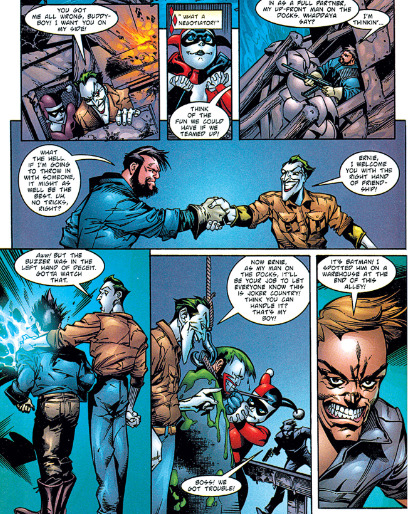
We cut to Harley doing some grunt work (finding a lair for Joker's crew, fighting opposing gangs, and eventually fighting Batman allowing Joker to escape) to gain Joker's favor. Eventually, Harley gets to spend a night with the Joker that she can't remember (Ivy assumes Harley was drugged).
When Harley wakes up, she cannot find the Joker but does get a message...to meet him on the amusement park's rocket ride. Cut to Harley getting launched off because Joker hates that he feels some romantic feeling for Harley, because it makes him boring. Harley manages to steer the rocket into Ivy's territory, and we cut back to where our story started.
Ivy feels some pity towards Harley, and gives her potion that will increase Harley's reaction, strength, and immunity to poisons. Ivy then recommends that Harley go attack Batman and Joker... out of spite that both feel towards the duo.
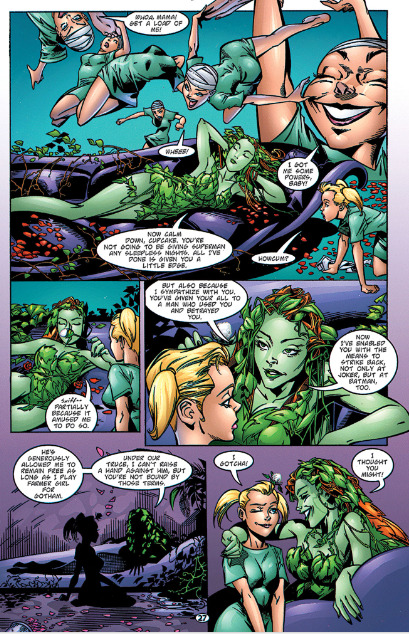
Cut to Harley (with great humor) making a makeshift Bat-Signal for Batman. Bats tried to talk Harley away from the Joker, but she tells Batman that Joker has a plan to kill the aid workers of Gotham in one big explosive trap.
The comic then cuts to one of the best Joker moments: Joker trying to make conversation with his henchmen about the women in their lives. Once one of them actually starts conversing with Joker about the lady he loves, Joker just kills the man... because Joker always has to be the center of attention.
Harley and Batman sneak into the lair. Batman deals with henchman while Harley confronts the Joker. The Clown Prince of Crime tries to use Joker Venom to kill Harley, but thanks to Ivy's formula, she lives. Cut to Harley beating up the Joker.
Batman tries to intervene (he thinks that Joker plans to kill all the medical worker, but doesn't know that was a Harley lie), but Harley whacks Batman over the head with her trademark giant mallet.
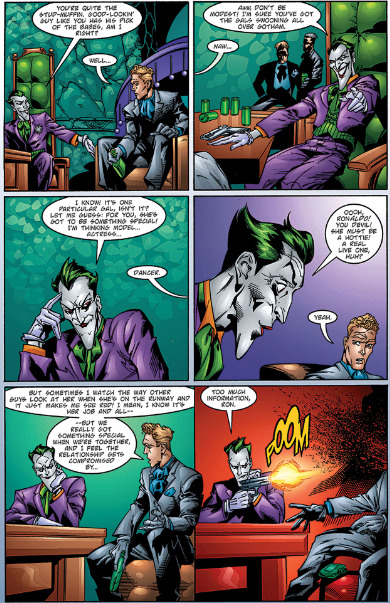
Joker tries to escape Harley's wrath, but she catches up to him. But then we see the (early) Harley Quinn character flaw of her going back to the Joker, with him only doing the smallest gesture of kindness. Granted, even Joker seems annoyed by this sequence of events.
Batman wakes up from his head injury and finds that the duo set the hideout to explode. This explosion tells the wider Gotham that the Joker is back... and he is done giving out jellybeans. The comic ends with Batman complaining to Alfred that he has to now deal with two crazy clowns!
Yeah, this comic is amazing! Paul Dini can write the best Joker stories out there, and he writes one here. Just so many little moments that show Joker's vanity. And the art by Yvel Guichet captures the humor from his sick mind.
But this is the intro to Harley Quinn, and it really works. It established the line of her being a foe for both Joker and Batman. Plus, it is nice to have Ivy involved in her life straight from the beginning. And Harley is fun, making you want to see more. Just a classic comic, and I think the best of No Man's Land.
10/10
#dc comics#batman#no man's land#bruce wayne#joker#harley quinn#harleen quinzel#poison ivy#penguin#oswald cobblepot#alfred pennyworth#dc universe#read through#great comics#paul dini#yvel guichet#aaron sowd
11 notes
·
View notes
Text
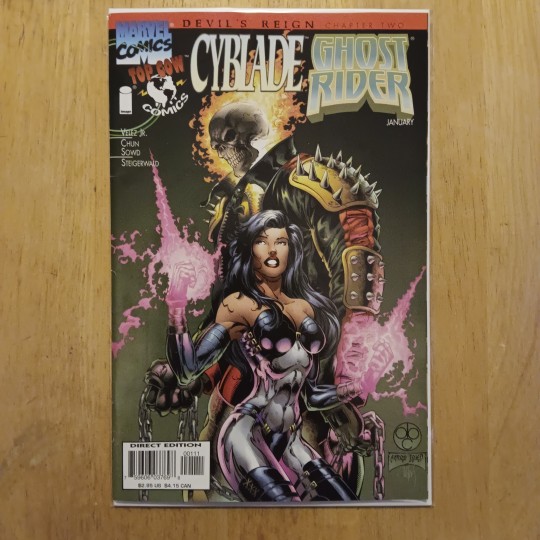
#Cyblade/Ghost Rider#1#Ghost Rider#Cyblade#Devil's Reign#Marvel#Top Cow#Anthony Chun#Aaron Sowd#Peter Steigerwald
2 notes
·
View notes
Text
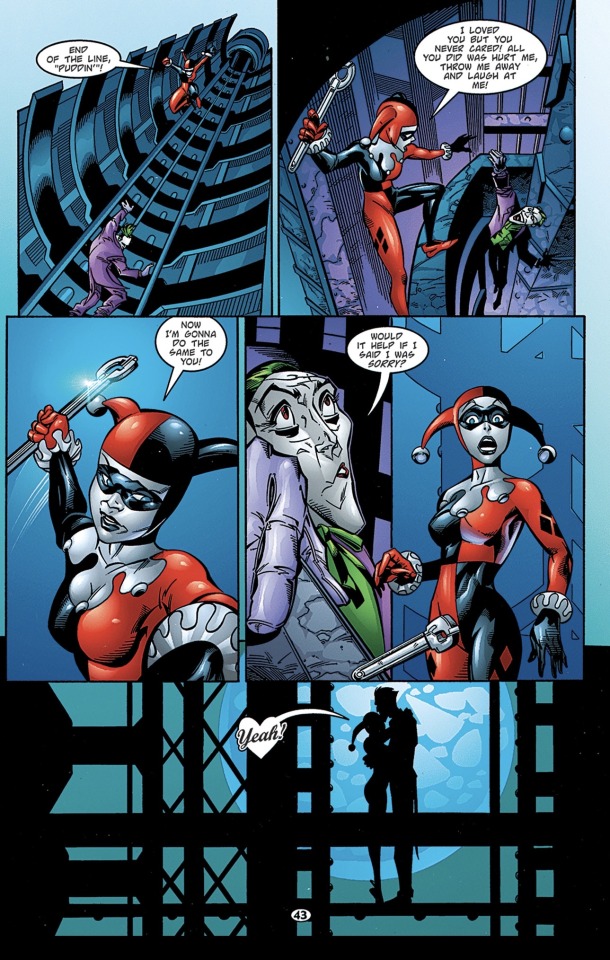
“end of the line”
Yvel Guichet - Aaron Sowd
5 notes
·
View notes
Text


All-Star Comics 80-Page Giant #1
Writer: Joe Kelly
Artist: Duncan Rouleau
Inker: Aaron Sowd
Colors: John Kalisz
#dc comics#jsa#justice society of america#the spectre#jim corrigan#johnny thunder#charles mcnider#dr. mid-nite#comics
12 notes
·
View notes
Text

Batgirl #4 (2010) Bryan Q. Miller Tim Levins, Lee Garbett Dan Davis, Aaron Sowd, Trevor Scott
16 notes
·
View notes
Text
Comics read this past week:
Marvel Comics:
Daredevil & Captain America: Dead on Arrival (2008) #1
This 48-page issue was published in November 2008. The story was first published in 2006, and in this edition it’s being “presented for the first time in North America.” I’m not sure in what context exactly it was first published. The story was written by Tito Faraci and drawn by Claudio Villa. And it was translated from Italian by Alexandra Hain-Cole. It’s also credited as adapted by Larry Hama. I found it interpreted online that that means he took what Alexandra Hain-Cole translated and rewrote it so that the words could fit into the already existing dialogue bubbles and narration boxes.
Nick says, walking in on Steve training, “Workin’ out’s a bitch when you get old, huh?”
And Steve says, of Nick showing up at the Avengers’ headquarters, “You’re not one for social calls, so why don’t we cut the idle chit-chat and show all our cards. I like the hear the worst news first. Saves the useless suspense.”
After Nick’s briefing, which ends with that he’ll get a call once the villain’s location is figured out, Steve says, a bit of frustrated, “Great. All we have to do is wait.” Nick tells him, “You and I know that’s most of a soldier’s job: waiting.”
The villain of this issue, Death-Stalker, previously died in Daredevil (1964) #158, which was published in January 1979. This story takes place in the modern day, and rather than being resurrected, Death-Stalker has accidentally travelled to the future because of his powers. And since it’s known that he was fighting Daredevil when he died, he decides to get revenge on his own “murderer.”
Ultimate War (2003) #1-4
These issues were published across December 2002 to February 2003. All were written by Mark Millar and penciled by Chris Bachalo. Issue #1 inked by Tim Townsend, issues #2-3 were inked by Tim Townsend and Andy Owens, and issue #4 was inked by Tim Townsend, Andy Owens, and Aaron Sowd. All were colored by Paul Mounts. Issues #1-3 were 23 pages, and issue #4 was 24 pages.
This miniseries is about a ‘war’ between the Ultimates and the X-Men. The inciting incident is a terrorist act by Magneto’s Brotherhood of Mutants. Initially the Ultimates believe that Magento and Professor X settled their differences and combined their Brotherhood and the X-Men. This isn’t true, but then the Ultimates don’t care. Because the X-Men faked Magneto’s death and secretly kept him alive so that they could try to rehabilitate him, they’re considered responsible for his current actions now that he’s escaped them. And then Magneto tips the Ultimates off to where the X-Men are hiding so that Xavier will get captured and he can try to become the new leader of his students.
This miniseries takes place before the Ultimates had proven their worth to the public. In issue #1 it’s said that “Captain America and the super heroes have to sound like they know what they’re doing to justify getting paid every month for doing absolutely nothing.” And in issue #2 they’re referred to as “that Ultimate Defense Department we’re spending stupid amounts of money on.” Those quotes are from Toad, of the Brotherhood, and Jean Grey’s father, respectively, but it’s still a little surprising to see the Ultimates’ existence questioned during the crisis that is Magneto’s reappearance. In The Ultimates (2002) #4 it was asked, “All this cash being diverted to superhuman forces is creating a lot of friction with the military brass. Can you seriously justify a fifty billion dollar headquarters off the coast of Manhattan when there’s only been one notable super-villain attack in American history? What if it’s another ten years before someone like Magneto comes along? Supposing it never even happens again?”
I was interested Janet’s perspective as a secret mutant in the public Ultimates. Wanda and Pietro are secret members of the team, which makes sense because their father is the famous terrorist Magneto.
In issue #1 Janet says, watching news reports about the attack and the revelation that Magneto is still alive, “People are going to be terrified out there. Scared out of their wits again… I thought we were getting paid to make sure this kind of stuff didn’t happen anymore.”
When Janet is upset in issue #3, over what Bruce did in a Hulk episode and over Pietro’s injuries, Steve pulls her aside for a talk. He tells her, “I know why this case is getting you so upset, Jan. We all do, and I want you to know that none of this DNA stuff matters to anyone else on the team.” He says, “You don’t have to pretend anymore, Jan. We know you’re a mutant and we know you were born with these powers.” He explains that Nick has known since she joined the Ultimates, but “Fury never brought it up because it’s inconsequential to him, sweetheart.” And finally, “It’s a war on terror we’re fighting out there, not a war on mutants. It’s important you appreciate the difference here.”
In The Ultimates (2002) #6 Hank had told Janet, because he felt embarrassed and emasculated by her being friendly with Steve in public where the media saw, “He wouldn’t be flirting with you if he knew what you really were,” referring to that she’s a mutant. Hank elaborated, “I wonder if he’d still have the hots for you if he saw you eating caterpillars and beetles or hiding in your little larval nest when all the mutant hysteria was going on a while back? Do you think they’d all find you so special and pretty if they were waking up every six weeks to find eggs in their beds?” And he said, “your personal hygiene makes me sick to my stomach sometimes.”
Janet stayed with Hank for so long because of self-esteem issues caused by those unseemly parts of her mutation. And probably also because of the fact that Hank could out her as a mutant. And, also, I had assumed, because from this description it didn't seem possible that Janet could be in an intimate relationship and hide her mutation, she didn’t think anyone else would be with her. So it’s disappointing to me that Steve simply learned that she’s a mutant from Nick and these other parts of her powers were never brought up or portrayed in the context of their relationship. Particularly because however Janet felt about them at this point in time, and however Steve reacted to them, could have helped better flesh out their relationship, and therefore the problems they had later on, as well. But I do appreciate for Janet’s sake this clear rebuttal to the horrible things Hank told her.
Also, Steve reassuring Janet that she’s not being judged for being a mutant reminded me of him not expecting her to feel judged in The Ultimates (2002) #9 after Hank’s domestic violence towards her was made public. After Steve referred to that Janet would be back on the team once she recovered, she explained that she was transferring to Germany and asked, “Do you really think I’m going back into the public eye after being humiliated like this?” He responded, “Why should you have to give everything up because of something Hank did? You’re not the one who did anything wrong here, Jan.”
In issue #4 Janet says to Nick, as Xavier is paralyzing every non-mutant mind in the area, “Well, at least now I know why you keep your little secret mutant on the books.” And when she finds Xavier, she says, “I got him, Nick, but I can’t say I’m too especially pleased with myself about this…” Nick tells her, “Just think about all those bodies floating in the East River and hit him with the biggest wasp sting you got, baby.”
In issue #1 Natasha questions including the Maximoff twins in the fight against the Brotherhood of Mutants. The twins, for their part, are divided about being there. Pietro complains, “We must be out of our minds. Our father is the most wanted terrorist leader in the planet and we’re walking into a U.S. Army facility? I’m telling you- this whole invitation of theirs was a trap.” But Wanda argues, “Why would they use us as bait when they know The Brotherhood regard us as traitors to their very species? Besides, hanging around here with the Super-Soldiers is probably the safest place to hide from Dad at the moment.”
The original explanation for their involvement with the team in The Ultimates (2002) #8, from Wanda, was merely that “my brother and I will take part in appropriate S.H.I.E.L.D. missions in exchange for the release of political prisoners.” Nick phrased it as that it “Ain’t the first time the security services done deals with terrorists” and that the Brotherhood “ain’t above shaking hands with us homo-sapien trash when the price is nice,” implying that the twins were still affiliated with the Brotherhood at this time.
Steve says, when Pietro is snippy, “I’m sure both you and Scarlet Witch could make a valuable contribution here.” And he defends them to Natasha by saying, “I think Wanda and Pietro have proven themselves on a number of covert missions for the U.S. government. While toning down the activities of The Brotherhood.” It’s worth noting that mutants weren’t a known concept in the 1940s, so Steve isn’t coming into this with any pre-existing anti-mutant bigotry, which may not be the case for everyone else.
Also, Thor says in issue #2, “I think it’s important that you realize how much everyone admires you for doing this, Wanda. Taking sides against your own flesh and blood is incredibly brave.”
I was intrigued by Pietro and Wanda’s relationship with Magneto. What I’ve seen of it is the main 616 continuity is minimal, and from before the reveal/retcon that he’s their father, but has come across as him feeling uniquely possessive of them.
In issue #2, when Steve tells the twins to fight back against Magneto, Wanda says, “We can’t. You don’t understand.” And Magneto says, “And they never shall, my darlings. Now come forward and accept your punishment.”
Magneto says, of Pietro betraying him and helping Xavier mind-control him, “I thought that showed admirable ambition” and “for the first time in your life, you were showing some degree of strength.” What he’s angry about is that “you turned my organization into a stooge for the Homo-Sapiens.” Wanda tries to argue, “I’m as guilty as Pietro, sir. If you have to punish him, you have to punish me, too.” But Magneto says, “Oh, but your punishment is quite straightforward, my little Wanda… You get to watch.” Then he uses his powers to shoot Pietro in both kneecaps with guns. Throughout this the twins were just standing still in front of their father. This all makes it seem as though they are somehow physically incapable of disobeying him.
In issue #2 a S.H.I.E.l.D. employee goads Bruce in his cell after the lights flickered, saying, “What’s the matter, Doctor Banner? You get all excited for a second? You think that was your big chance for the world to get a glimpse of the big, bad Hulk again? Ignore us all you want, you’ll still rot in that holding tank, lowlife.” But he is actually able to escape when Magneto shuts off the power for longer, and in issue #3 Janet explains, “It was only a couple of minutes before the back-up generator kicked-in and the gas knocked him out, but that was all he needed to break loose and eat the nursing staff. […] All six of them. Every one of these people had kids and our resident vegetarian here downed them in seconds.”
Janet being disturbed by the Hulk makes it more meaningful that she visited Bruce in his cell in The Ultimates 2 (2005) #13 after feeling guilty about how lonely his life was after his funeral in The Ultimates 2 (2005) #3.
In issue #3 Natasha is referred to as “an anti-human assassin.” Back in The Ultimates (2002) #8 Clint said during a battle, “It’s okay for you and your million dollar enhancements, but I can’t do this stuff and talk at the same time, honey!”
Ultimate Six (2003) #1-7
These issues were published across September 2003 to April 2004. All were written by Brian Michael Bendis. And all were penciled by Trevor Hairsine and inked by Danny Miki, except for that the first 7 pages of issue #1 were penciled by Joe Quesada. Those 7 pages were colored by Richard Isanove, and the rest of issues #1-3 were colored by Dave Stewart. And issues #4-7 were colored by Ian Hannin. Issue #1 was 28 pages, issue #2 was 23 pages, issues #3 and #7 were 21 pages, issues #4 and #6 were 22 pages, and issue #5 was 26 pages.
Issue #1 is the first I’ve seen of there being a S.H.I.E.L.D. agent named Sharon Carter in the Ultimate universe. In the 616 continuity, Sharon has the same last name as Peggy Carter because she’s her niece, and both are blond. In the Ultimate Universe Steve’s WWII love interest is Gail Richards (though now Gail Barnes), pulling from a character in the Captain America serial from 1944. In The Ultimates (2002) #3 Bucky said, “Gail and I just take care of my eldest daughter Sharon’s two boys three days a week so she can get back to work.” Both Gail and the S.H.I.E.L.D. agent Sharon have red hair.
In issue #1 Nick Fury tells prisoners at “a secured S.H.I.E.L.D. compound,” who haven’t been told what their charges are, that they are all a “permanent guest of the United States government” and “are being detained as an illegal, unnatural genetic mutation.” He explains, “You gave up your participation in society the second you- any of you- purposely and maliciously altered your genetic structure. There are no laws for you, except for the ones the President of the United States authorized me to make up for you. You turned yourself into freaks and you’ll be treated as such.”
It’s explained to a new prisoner, “The device around your neck, your collar, will stabilize your self-inflicted genetic damage to a more appropriate and legal level- until such time that our specialists can analyze and repair your DNA sequences. You are also hereby informed that at such time as your genetics have been stabilized you will be tried for your crimes in a United States Federal Court. If you attempt to engage your genetic irregularities […] your collar will forcibly stabilize your genetic sequences.”
After the prisoners escape, even though they remove the collars, they can’t use their powers except for in planned moments where they are prepared to leave quickly afterwards, or when they are no longer in hiding, because the use of their powers will detected by satellites.
In issue #4 the President, furious to be first finding out about the prison and about the possibility of it becoming public knowledge, says, “Can you- do you know how many bleeding heart organizations I am going to have crawling up my skirt when they find out you were holding men against their will!!?? Without a trial?? Doesn’t matter what they did, Fury? Doesn’t matter why you put them there. You think it does- I am telling you, to these people, to the American people, it absolutely does not!!”
In issue #4 Osborn explains to the other escaped prisoners, “My company, Oscorp, was commissioned to create a super soldier serum. That’s what Otto and I were working on when we ended up the way we are. Same with you, and you… you are direct results of my competition for that same government contract? All of us crawling over to impress Fury and get that contract? See it now? Do you think anyone in that White House wants it getting out to the world media… to their enemies and allies… that Nick Fury was secretly funding and financing super soldier research?”
This is a little confusing to me. Trying to recreate the super-soldier serum was a core part of the beginning of the Ultimates before Steve was found still alive. In The Ultimates (2002) #2 Nick explained to Bruce that “That Super-Soldier program you’ve been working on for the last eight years” is getting “a hundred and fifty billion dollar cash injection” because, for the team, “we need someone up there with a flag on his chest more than ever right now.” And this research was public knowledge. In The Ultimates (2002) #4 Tony said on TV, “As for the Super-Soldier situation; of course, we’re disappointed that Doctor Banner hadn’t delivered the goods, but Captain America is the most dangerous man alive. Are you seriously telling me we’re going to need two of this guy to win a fight?”
In issue #2 Jan says, of the villain Doc Ock, “This guy- I swear to God- this guy Octavius was a genius. I wrote one of my Doctorate’s on this man’s work. Worshipped the guy.” Nick follows that up with, “Speaking of your taste in men… Our Doctor Pym here has been spending his free time working at the facility where we house these illegal genetics. I know seeing Henry here, since he left the team, is a bit jarring. I hope we can keep things civil and professional and listen to what the man has to say.” Hank is there meeting with Nick, Steve, Janet, Thor, Clint, and Natasha in person.
This was surprising to me, considering the scene in The Ultimates 2 (2005) #6 where Hank talked to Janet alone after he’d had a meeting with Nick at the S.H.I.E.L.D. headquarters, and Steve stepped in as soon as he saw and said, “Walk away, Pym.” And then, “Walk away or I put your head through that wall.” I had assumed this by-chance meeting was the first time Janet had seen Hank since their fight, and that Steve didn’t want Hank anywhere near Janet. But now it seems that Steve’s reaction was specifically because their conversation was one-one-one and a bit flirtatious. Steve was exasperated afterwards, saying when Janet said that wasn’t necessary, “Jan, for God’s sake…” Also, I realize now that Hank and Janet, though they didn’t interact, were both present for Bruce’s execution and funeral in The Ultimates 2 (2005) #3.
In issue #3 Janet gets upset and rushes in when Tony finds Hank seriously injured, even though Tony hadn’t declared it safe for anyone else to enter yet. Steve calls out for her, but as she ignores him, he then simply informs Tony that she’s coming. There’s nothing to indicate afterwards that Steve was upset by this. While Steve dislikes Hank and doesn’t understand why Janet cares about him- he said in The Ultimates 2 (2005) #8, “How can she even speak to a guy who beat her up every night?”- I don’t think he’s possessive or insecure like that, or is tactless enough to confront Janet over this. And I don’t think he actually wants Hank dead. He wasn’t try to kill Hank when he beat him up in The Ultimates (2002) #9. And, though he hates Bruce for all the people he killed after he willingly chose to transform into the Hulk, Steve was upset when it became clear Bruce was probably going to get the death penalty in The Ultimates 2 (2005) #2.
In issue #7 Janet goes to see Hank, still unconscious, in the hospital. It’s said that the “notes and files” she provided on his unique genetics “were very helpful.” But as soon as Janet is told that Hank is “in serious but stable condition,” she mentally checks out of the situation. And when she’s told as she leaves that they’ll call her if there’s any change in his condition, she responds, “No, call General Fury.” This, of course, brings to mind Janet in the hospital in The Ultimates (2002) #7 after Hank nearly killed her. It was said then, “Fortunately, she found the strength to grow back to human size by the time the emergency teams arrived or they’d probably never even have seen her,” and also that Hank was seen “wearing a baseball cap and running out of the house in the early hours of the morning with a duffel bag over his shoulder,” meaning Hank, despite his claims of remorse, simply left her there to die.
I like this new moment at the hospital, of Janet making sure that Hank stays alive but not involving herself any further, representing her moving on from him, but it makes her being interested in returning to Hank because she isn’t attracted to Steve and finds him boring and judgemental in The Ultimates 2 (2005) feel less supported. And there’s nothing between now and that book to build towards Janet feeling more positively towards Hank.
Also, that Hank is working with the imprisoned Spider-Man villains in this series, doing group therapy and trying to cure them of their genetic alterations, works well with how he kept visiting Bruce in prison in the main series despite them not being friends before Bruce was locked up.
Steve gets upset when he first learns in issue #2 that these criminals got their powers from experiments commissioned by Nick to try to recreate the experiment that made him Captain America. Then in issue #4 he confronts Nick at an inopportune time, saying of the experiments, “seventy years later and all we have to show for it… is this? Half-mutated homicidal maniacs? Thugs with powers? How many people have died for this? How long has this been going on? How long is this going to [continue?]”
Nick tells him, “Captain, you, like the atom bomb, are one of the greatest success stories in the history of war. And ever since, like the bomb, every country with a petri dish and five dollars has been scrambling to not only repeat you… but to improve on you and stockpile you.” And he echoes something Hank said in issue #2 by saying, “One way or another, the next war will be a genetic war.” Steve says, “This isn’t the legacy I was hoping to leave behind when I volunteered for the program.” But Nick tells him, “This has nothing to do with you. If it wasn’t ’Super Soldier’ it would be something else.”
Steve says to Nick in issue #7, after seeing that S.H.I.E.L.D. isn’t going to kill Osborn, but is going to keep him imprisoned until they get everything they need from his genetics, “You know, being a veteran of war… Being a creation of war… It occurred to me… That, really, it’s men of influence and power that decide what these wars will be about. They decide who we are going to fight and how we will fight them… And then they go about planning the fight. In a sense, really, these people of power will the war into existence.” Nick doesn’t respond.
Steve drawing a line between himself and Nick made me think of their quiet moment of camaraderie in The Ultimates (2002) #10 where they stood together in silence on the way to a mission after Nick asked if he was okay and Steve said he was, but then pointed out that he had done “an airdrop onto one of these alien death factories” before, referring his final mission in WWII.
That Nick tolerates being confronted by Steve when he’s busy in issue #4 and the lecture in issue #7 seems notable when compared to that Nick blows up on Peter Parker in issue #3.
In issue #1 Steve, Clint, Natasha, Thor, and Janet all show up for the arrest of a reality TV show star who had an illegal genetic enhancement. When he makes a run for it, Steve asks Thor to round him up, but Thor says no. So then Steve asks Clint. I was surprised that Thor would participate in this in the first place, but then Steve explains, “Only one of us had to swing by and get you but then everyone else wanted to see Hollywood.” Clint adds, “We’ve had nothing to do for almost two months.”
In issue #3 it’s questioned how S.H.I.E.L.D. can’t easily locate powered people with all the technology it has, and Nick says, “Captain, if we had that kind of technology- to locate anyone anywhere- Your butt wouldn’t have sat in a block of ice for fifty years.”
And in issue #3 Nick yells, “I lost thirty-five people today!! That’s more agents in a single day than I have lost since I took this job!” His reaction adds more weight to that “twenty thousand troops” were killed in The Ultimates (2002) #10, though that was actually published before this.
Ultimate Nightmare (2004) #1-5
These issues were published across August 2004 to February 2005. All were written by Warren Ellis. Issues #1-2 and #4-5 were penciled by Trevor Hairsine, and issue #3 was penciled by Steve Epting. Issue #1 was inked by Simon Coleby. Issue #2 was inked Nelson DeCastro with Simon Coleby. Issue #3 was inked by Nelson DeCastro with Tom Palmer. Issue #4 was inked by Nelson DeCastro with Mark Morales, Rodney Ramos, Simon Coleby, and Tom Palmer. And issue #5 was inked by Nelson DeCastro. All were colored by Frank D’Armata. Issues #1 and #4 were 23 pages, issue #2 was 24 pages, and issues #3 and #5 were 22 pages.
In issue #1 Nick says, “I like Tony. Everyone likes Tony. He’s a friendly little freak of nature, you know? But one day he’s going to pull his weak sister act at the wrong moment and he’s going to get capped. And then we’ll be without a double-brained freak of nature.”
In issue #2 Piotr says, of the Tunguska event, an explosion over a remote area of Russia a hundred years before, “What people say is… the forest grew back wrong. Trees and plants were different. There’s a heavy level of mutation in the natural world there. That’s why people don’t talk about it. No one wants to be too interested in mutation, you know?” Jean responds, “Oh, I know.”
Nick says to Sam, after Sam explains that he saluted him despite not being in the army anymore because of force of habit, “You’re a good boy.” And later Nick addresses a S.H.I.E.L.D. agent as “son.”
In issue #3 Natasha confirms, of the abandoned bunker they’re investigating, “The staff here didn’t get paid for six months. This looks to be around 1994. So they literally just locked up and left.” Steve says, “I knew a lot of Russians. I could never imagine Russians doing that.” And Natasha tells him, “You missed sixty years of disappointments, Captain. Sixty years of the state saying they’d look after us, and then having no choice but to look after ourselves.”
In issue #4 Natasha explains, of the facility they’re investigating, “They were terrified of you, Captain. Even though you were lost by then. An American supersoldier. You reinvented ground war. It was the last thing they expected. And there were no guarantees that America wouldn’t rediscover how to make more of you. So they began a cold-war battle to fight a soldier who no longer existed. The whole time you were asleep in the ice, these people were at war with you.” She says, “These things that fill this place, Captain, these human horrors… These are your Russian cousins, medical jokes kept underground for everyone’s safety. Implanted with radio devices monitored by nuclear landmines set to explode if they leave the area.”
Natasha had opened her explanation with, “This is all your fault, Captain. […] This is all because of you.” Then, after they fight another ‘monster,’ she says that the facility was operating “Long enough to make a hell of a lot of mistakes. Mistakes too big to kill. Mistakes so bad they could do nothing but lock them up. And in a funny kind of way, it’s all your fault. But perhaps you have to be Russian to appreciate the humor.” Steve later says, “One thing I don’t get. You are a Russian supersoldier.” And Natasha explains that there were multiple programs to try to create Russian super-soldiers.
I think it’s safe to assume that Natasha’s harshness towards Steve isn’t entirely stemming from learning about this facility but also comes from her own personal experiences. That Steve took what she said about him being responsible so calmly was surprising to me. But this is coming after he was upset by learning about other attempts to recreate him, which resulted in powerful criminals, in Ultimate Six (2003), so he’s not entirely unprepared, though those experiments were at least self-inflicted. It may be that Steve has already firmly decided that it’s not him but “men of influence and power” that are responsible for having ‘willed’ the “genetic war” into existence, which he didn’t foresee when he volunteered for the Super-Soldier program. It may also be that Steve recognizes that Natasha is angry over what happened to her, so he was waiting for a more appropriate target to vent his own anger.
The Ultimate universe version of Alexei Shostakov, the Red Guardian, is the “trustee” of the facility, and, recalling the first appearances of the main version of him in The Avengers (1963) #43-44, he was created to one day fight Captain America and prove Russia’s superiority. Alexei phrases his explanation of himself as “the good workers of this place, they said we make you great,” and, “I have waited. And guarded the means of production like a good worker.”
Steve wants the one-on-one fight with Alexei. He explains, “Because, you know what? I knew Russian soldiers during the war. They were good and decent men, and they made horrible, painful sacrifices to defend their people. And to see them turn into people who make monsters and keep them underground on top of a minefield- to see people like you, proudly complicit in this nightmare- yeah, I’ll give you your fight.” In their original showdown, Steve fought alone because the other Avengers had been captured.
This Steve having admiration for the Russian soldiers of WWII is really interesting to me. This version of Steve infamously yelled in The Ultimates (2002) #12, after a villain said he expected Steve to surrender, “You think this letter on my head stands for France?” In contrast, the main version of Steve talked in Captain America (2005) #3 with extreme admiration for the French Resistance he witnessed and fought alongside during WWII, and said “it really galls me when I hear my own people dismissing the French as cowards. We’re talking about a people who never gave up fighting the Nazi occupation. Their country may have surrendered, but they didn’t.”
And in contrast to that, in Captain America (2005) #5 Steve felt less positively about the Russian soldiers he fought alongside. Steve and Bucky were both upset when a Russian soldier killed one of their prisoners, his cousin, because “he brought shame on our country, to fight for our enemy. He was no longer Russian.” And Steve judged the Colonel they were working with for torturing another prisoner for information. That during WWII the Russians treated their German prisoners much more cruelly than the Americans did is true to life. The Colonel said to Steve, “You don’t like our ways? How easy it is for you to judge us. When Nazis control half of your Washington D.C.… when they turn your own brothers against you, then you can judge…” Steve responded, “Well, maybe if your leader hadn’t been so obliging when they invaded Poland, you wouldn’t have the wolves at your door like this.” He’s referring to the Soviet-German Non-Aggression Pact of August 1939, where both sides agreed not to attack the other or ally with enemies of the other. Germany invaded Poland a week after it was signed. The pact was broken when Germany invaded the Soviet Union in June 1941, leading to the Soviet Union joining the Allies.
Issue #5 introduces this world’s version of the Vision. Rather than being an android (with human brainwaves) created by the android Ultron, who was created by Hank Pym, Vision is a robot from space and was sent to warn the Earth about Galactus as one of his Heralds.
Ultimate Secret (2005) #1-4
These issues were published across March 2005 to October 2005. All were written by Warren Ellis. Issues #1-2 were penciled by Steve McNiven, inked by Mark Morales, and colored by Morry Hollowell. And issues #3-4 were penciled by Tom Raney, inked by Scott Hanna, and colored by Rob Schwager. Issue #1 was 23 pages, and issues #24 were 22 pages.
This book introduces this world’s version of Captain Mar-Vell. His role in issue #1 certainly feels very similar to his first appearances in the main continuity in Marvel Super-Heroes (1967) #12-13 and Captain Marvel (1968) #1. His mission here was supposed to only be to watch the Earth be destroyed by Galactus, and before that to make sure the humans didn’t have the rocket technology to allow some humans to escape the planet alive. While his first story in the 616 universe also involved protecting a rocket from a Kree Sentry, it didn’t have anything to do with Galactus. And the Kree hadn’t decided what to do with the Earth yet, so Mar-Vell wasn’t necessarily going to be watching over their destruction at that point. And he wasn’t disobeying orders by protecting the rocket, either, as it was Yon-Rogg that was jeopardizing the mission by sending the Sentry after it in the first place. Also, there’s no mention of Una in this story, who was the source of Mar-Vell and Yon-Rogg’s original conflict, the woman they were both in love with.
In the main continuity the Kree naturally look human as long as they’re wearing human clothes, whereas here Mahr Vehl had to have surgery in order to look human, and this is forcibly reversed after his betrayal to the human side, making him look like an alien again. He does have the human identity Walter Lawson at the beginning of the book, though I don’t know if here it is also the name of a dead man whose identity he stole, but he gets caught as an alien pretty quickly, anyway. Mahr Vehl also has the same watch imbedded in his wrist. And his change of sides is because he genuinely likes humans and human culture. I haven’t actually read far enough in Captain Marvel (1968) to know why he aligned with humanity there.
In issue #2, discussing the Chitauri’s claims about their power and importance in the galaxy, Sue Storm says, “The Ultimates could beat the Kings of the Universe but couldn’t stop the Hulk from eating half of Midtown? I don’t think so.”
Tony says to the Fantastic Four, who are teenagers in this universe, “Good afternoon, kids. They tell me the entire world is in danger from some hideous alien beasties once again. Terribly dreary, I know. So what we’re going to do is fly across the continent very, very fast, discover all kinds of perfectly vile things, kill everybody and then have a little drinkie. Ready?”
In issue #3 Clint says to Natasha, “I hate working with the super heroes. I liked it better when it was just us. No showboating, no ‘you think this A on my head stands for France’, no overgrown kids getting into their battle armor drunk.” Natasha says, “That’s my fiancé you’re talking about,” referring to Tony. And Clint says, “That’s your future estate inheritance I’m talking about.” But he continues, seriously, “The bigger and weirder this gig gets, the less professional it becomes. Did Fury really say he’s drafted those four kids from New York? It’s all gone to garbage. We’re all going to die.”
In issue #4 Clint says, “[Mahr Vehl], Tony, and I take the lead. You kids stay behind us at all times,” referring to Sue and Reed. Sue argues that they have powers, but Clint says, “But you’re not trained. Let me make this crystal for you, brainy: I kill. Tony kills. The alien probably kills. You don’t.” I wonder if this is intended as that this Clint has a stance against kids killing as a counterpart to the main Clint’s stance that “Avengers don’t kill.” This version of Clint does have children.
Reed and Sue argue with Clint when he wants to leave Mahr Vehl behind on the mission after he gets injured, and while they make a good argument that they need Mahr Vehl to control the Kree technology for them, Sue also says, “If being ‘professional’ means turning into you, we don’t want to be.”
At one point Tony addresses Reed as “sport.”
Nick explains that a pile of alien bodies is “The ones we killed, as opposed to the ones the kids just beat the pus out of,” referring to Johnny and Ben. And then he says, “I’m gonna wait until the four kids are out of here, and then burn these in piles.”
Ultimate Extinction (2006) #1-5
These issues were published across January 2006 to May 2006. All were written by Warren Ellis and drawn by Brandon Peterson. Issue #1 was colored by Justin Ponsor with Paul Mounts, issues #2-4 were colored by Justin Ponsor, and issue #5 was colored by Justin Ponsor and Jason Keith. Issues #1-2 and #5 were 23 pages, and issues #3-4 were 22 pages.
In issue #3 Reed says, “I’ve had this idea, Sue. I’ve had this terrible, terrible idea. I mean, I want to throw up every time it crosses my mind. But I won’t go away. I know how to hurt Gah Lak Tus. Maybe even kill it. But it’s… obscene. And I’d be handing Nick Fury something very much like an ultimate weapon.” In issue #4 Reed contacts Nick, setting into motion building the weapon, then says, “Well… I can’t undo it now.” Sue says, from across the room, “We shouldn’t have to think about things like this. We shouldn’t have to do this. It’s too big.” Then when Reed stretches across the room for her, she says, “Don’t touch me. Not right now, okay? Just… don’t touch me, Reed.” I found this really compelling, and it made me interested in reading about this version of these characters further.
In issue #2 Reed learns about and asks if he can borrow S.H.I.E.L.D.’s “private version of the Hubble Space Telescope. Used for detailed imaging inside the solar system.” Nick responds, “I dunno. Could you sound less like I was your dad and you were asking to take out the car?”
Steve says, freaked out from being told about Galactus, “It’s an evil too big for me to hit. I never thought there’d be such a thing. I can’t do anything. There’s something that looks like it came from out of one of those stupid color movies that are everywhere now, on its way to kill us- and I’m just an infantry guy.” Later he says, “This is all getting too big for me, I think. And here I thought I was coping with the 21st century.” Then when a report of an attack comes in, he insists, “It’s mine, Nick. Terrorism, I can hit.”
In issue #3, when Sam is nervous about fighting what he assumes is a mutant, Steve says, “Toughen up, son. They get beaten down just the same as anything else on this world.”
When Misty Knight yells at him, Steve says, “You know, in Iceland, they have a bottomless well where they drown dames like her.” I’m not sure what this is referencing.
In issue #4, as Tony is correcting Steve, he prefaces it with, “Cap, I know things have gotten very weird of late, and I know you must be hanging on to the ground with all your fingers right now.”
As Tony, Mahr Vehl, and the Silver Surfer are falling into the ocean, Nick instructs, “Iron Man and Marvel are priority- pick up the other body only if you can without endangering my people’s lives.” Later, however, when he learns that the “silver guys” are “softening us up for the arrival of Gah Lak Tus” by running a cult that encourages people to kill themselves, because “If eating planets is what powers you, you’re going to want to expend as little energy as possible in doing it” and that meant there would be less people to fight back, Nick says, “Holy hell, that’s sneaky. I want one of these guys. We didn’t retrieve the one Tony smashed, and I want one.”
I liked the contrast in issue #5 of Xavier and Jean preparing their psychic weapon against Galactus, telling the world, “Give us your thoughts. Thoughts of making things. Think of who you love. Your ideas, your fantasies, your ambitions,” sandwiched between scenes of bloody fighting as S.H.I.E.L.D. defends the facility from many attackers.
Timely Publications:
the Captain America stories in Captain America Comics (1941) #23-24 and All-Winners Comics (1941) #7 and U.S.A. Comics (1941) #7
These 7 stories were in issues cover dated February 1943 to March 1943. They ranged from 13 to 20 pages.
I was surprised by the military and police being portrayed as kind of pathetic in “Captain America Battling the Deadly Snapper” (written by Otto Binder; penciled by Syd Shores; inked by George Klein and unknown) in Captain America Comics #23. In the beginning a bunch of soldiers are walking in formation past Swamp Sinister. One says, “That place gives me the creep!” Another says, “I wouldn’t go in there alone on a bet!” Also nearby are a bunch of prisoners in a chain-gang digging a ditch with shovels. One suddenly breaks free from his chains and runs right through the soldiers, knocking them all over.
Then when Captain America and Bucky are about to enter the swamp to search for the escaped murderer, police arrive with dogs, and one of them says, “Wait, Captain! Even you can’t tackle that swamp alone!” But then the officers and dogs are viciously attacked by giant turtles and flee, so Steve says, “The guards ran! Guess it’s up to us, Bucky!” It’s later revealed that there are a lot of dangerous criminals living in the swamp who’ve escaped over the past two years.
This made me think of the Black Venus story (writer unknown; drawn by Charlie Tomsey) in Contact Comics (1944) #1, cover dated July 1944, which was published by Aviation Press. The main character was a U.S.O. hostess who also had her own secret plane that she used to help the official American Army pilots. When a Japanese squadron ambushed an American squadron, she ambushed them, giving the American pilots the chance to regroup and counterattack. It’s said, “She stayed around just long enough to give us the upper hand!”
Black Venus then landed her plane to search for clues as to where the Japanese planes had come from. This is followed by her getting capture, turning the table on her captors, and then escaping while destroying the enemy base. When I first read this story I assumed that having Black Venus land her plane was a way to be able to create stakes in the story without risking making the American Army pilots look weak.
In the beginning of the story “Captain America and the Idol of Doom” (writer unknown; penciled by Don Rico, Ernie Hart, and Ed Winiarski; inked by George Klein and unknown) in Captain America Comics #23 Steve and Bucky are walking along a dock in the evening, with the narration saying they “are on their way back to camp after a leave.” Seeing a boat leave, Bucky says, “Look at that, Steve! It’s a funny time to go for a row!” And Steve says, “They’re a strange couple, too- a Hindu and a white woman! I’ve got a hunch we’d better stick around!”
The story “Captain America and the Return of Doctor Crime” (writer unknown; possibly penciled by Al Avison) in All-Winners Comics #7 is the second appearance of Dr. Crime, who first appeared in “Captain America and the Terrible Menace of the Pygmies of Terror” (written by Otto Binder; drawn by Al Avison) in Captain America Comics #12, cover dated March 1942. In the first story both Steve and Bucky were miniaturized by Dr. Crime’s shrinking drug, and while they were threatening him into curing them, Steve said, “The antidote Dr. Crime! Give it to Bucky first!” And Bucky said, “Gimme! Quick! This being a dwarf ain’t to my liking at all!” Yet in this story only Bucky gets shrunken of the duo, and after Steve uses the antidote on another prisoner, Bucky says, “Hey! What about me?” And Steve answers, holding Bucky in the palm of his hand, “You might come in handy this way! I’ve got the formula to restore you anytime! Come! We’ve got work to do!”
In the story “Captain America: The Vampire Strikes” (writer unknown; penciled by Syd Shores and Al Gabriele; inked by George Klein and unknown) in Captain America Comics #24 Steve and Bucky are in an absurd amount of denial that they have encountered a vampire on Vampire Mountain, which legends say no one ever comes back from alive. They stupidly refuse to make that determination as they repeatedly see clear evidence of it. I can remember them fighting a vampire once before, in a story with the exact same title (writer unknown; possibly penciled by Al Avison; possibly inked by Don Rico) in All-Winners Comics #5, cover dated Summer 1942. Though that vampire wasn’t a natural, ancient vampire like this one, but the result of a Japanese-made biological weapon.
DC Comics:
Batman: Gotham Noir (2001)
This 64-page graphic novel was published in March 2001. It was written by Ed Brubaker, drawn by Sean Phillips, and colored by Dave Stewart.
This is a classic noir-style story, which I know Ed Brubaker has written a lot of, set in 1949. The focal character is Jim Gordon, a divorced, alcoholic private investigator, formerly a cop, with a less than stellar reputation. Harvey Dent is still the assistant district attorney, is still friendly with Jim, and is dedicated to catching the corrupt mayor.
Selina, the Cat, Kyle previously dated Jim, but is now married to millionaire Bruce Wayne. She runs a nightclub, the Kitty Cat Club, which has illegal gambling in its backroom, which means it also has to cooperate with Tony Zucco’s mob.
Bruce was a lieutenant in WWII, though he refused to use a gun and instead fought with his bare hands, and is now Batman. As Bruce he’s friendly with the mayor, hosting a campaign fundraising event for him at Selina’s club. Jim is convinced that Bruce is using his wealth to rig the election for the mayor, and comes across to me as feeling betrayed by this- “And what the hell are you doing rubbing elbows with that fat fool?” In the end it seems that Bruce was only close to the mayor in order to get dirt on him, as he says he gave “documentation of payoffs to the mayor’s campaign” to the U.S. attorney.
Jim thinking that Bruce is a part of the city’s corruption- and Jim’s resentment over Bruce marrying Selina, demonstrated by him thinking of Bruce only as “the millionaire” in the context of their relationship, rather than by his name- is a sad state for their friendship to be in, considering that they were close during WWII. Jim saved Bruce’s life back then, and, though we don’t see it in this story, as one point Jim used to call Bruce “the brave lieutenant.” And in this story Jim has a dream where Bruce, still in his tux from the party he was at with the mayor, tells Jim, who is in his army uniform, “This city disgusts me, soldier.” And then, “Is this what they expect us to come home to? A city run by gangsters?” This is the only part of Jim’s dreams we see that isn’t entirely about his trauma from the war.
Bruce, as Batman, for his part, seems to me to feel betrayed by Jim’s current state. Batman says to Jim, “Pull yourself together, Jordan! You let your drinking get out of control and a girl died.” And then, “You can’t hold anything, Gordon- not your job or your family.”
The murder of Bruce’s parents in front of him when he was a child was never invoked in this story, as it’s from Jim’s perspective. Instead, Jim’s trauma that’s the source of his problems is that he killed an enemy soldier during the war that was going to kill Bruce, not realizing it was a child soldier. Afterwards Jim cried out, “No! He’s just a baby,” and, “he’s just a little kid… Oh, God… what have I done?” Bruce explains in the present, “He saved my life… but it broke him.”
We don’t really see much of Bruce and Selina’s relationship. It doesn’t come across that she knows he’s Batman. When Jim asks Selina why she doesn’t have Bruce look after the friend she hires him to bodyguard, since Bruce will be at the party Jim’s to attend with the girl, Selina says that Bruce “has a tendency to disappear at social functions.” But later, when Bruce is off being Batman during the campaign fundraiser event, she complains, “Where the hell is Bruce? This is his party, not mine.”
But when Jim is in hiding, having been framed for a murder, Bruce and Selina go together to drop off a package for him in a trash can in a run-down part of town, which to me indicates closeness and trust in their relationship, that they would both be open with each other about being involved in this, and civility over their respective pasts with Gordon.
Batman at this point is still thought of as an urban legend to everyone but the criminals who’ve encountered him. Even Jim only learns that Batman is real during the events of this story. But at the end Harvey claims that he made up Batman, that “I needed something to strike fear into the hearts of the monsters that were running this town. So I got a few of my snitches to start the rumor, and it took off like wildfire.” This made me think about how Harvey and Batman were working together in Batman: Year One (1987), and I wonder if this Harvey does know that Batman is real and claimed to have invented him to help protect their secret. I prefer that Batman is real in this story over that Jim hallucinated him.
The evidence otherwise is that this Bruce isn’t shown to disapprove of Selina’s business having a relationship with the mob, meaning he may not be as principled as the usual Bruce. That one of Zucco’s goons says, referring to when Batman saved Jim from them, “I didn’t see no damn Bat. I don’t know what those mugs are talkin’ about. Gordon just went crazy on us, that’s all. And, most damning, that Bruce shows up at the end, after the big fight, but then Batman shouts a warning to Gordon later that same page, and then there’s one panel on the next page showing Batman watching from above.
There’s no indication of what direction it was coming from, but we know it was Batman shouting because the speech bubble is in his unique jagged style for this book. To me, though, it indicates that he wasn’t just Jim’s hallucination that Batman warned Jim about something behind him. I also don’t really believe that Jim could have fought off those mob goons on his own. As for the Batman watching from above the scene as Jim died… I know it’s a stretch, but maybe it’s a metaphorical Batman, as some kind of manifestation of Bruce and Jim’s real bond, their similar righteousness and shared indignation about the state of their city, being present for Jim in his final moments. I’m also willing to accept a fantastical Batman that’s connected to but isn’t quite Bruce himself, a la Batman: Creature of the Night (2018).
It’s just that I think it’s more interesting to include the way Batman spoke to Jim as a part of the characterization of Bruce and Jim’s relationship, rather than just thinking of that as a part of how Jim would talk to himself.
Also, Harvey is also in that scene at the end, so the alternate explanation that he’s Batman, as was suspected in Batman: Year One (1986), doesn’t work.
Fawcett Comics:
the Captain Marvel stories in Whiz Comics (1940) #93-94 and Captain Marvel Adventures (1941) #80-81 and The Marvel Family (1945) #19-20
These 15 stories were in issues cover dated January 1948 to February 1948. They ranged from 7 to 9 pages.
In the story “Captain Marvel Becomes a Hobo” (writer unknown; drawn by Pete Constanza) in Whiz Comics #93 Cap tracks down a man who was a hobo before he was married and became one again because he wrongly believed his wife and child were dead. Since “hobos are clannish! They’ll never give away any information about each other,” Cap has to dress up as a hobo to be “like one of the family” and get them to tell him if they’ve seen the man. Before, when Cap was still in his Captain Marvel uniform and the hobos tried to intimidate him into not searching for the man, Cap thought, “No sense fighting them! They did nothing wrong! They’re just protecting one of their buddies!” And at the end of the story Cap says, “That was a happy reunion they had! Well, I guess I can take off these rags now! First time I was ever a hobo… and it’ll be the last!” This seemed significant to me because Billy was once homeless himself.
In the story “Captain Marvel in the Midget Race” (written by Otto Binder; artist unknown) in Marvel Family #19 Cap helps race-car driver Pat when he’s injured and can’t drive by racing for him, since the car was invented by his invalid father and “the disappointment might kill him!” After Cap wins a woman approaches him and kisses him on the mouth. Cap says, “Hey! I don’t even know you miss!” She says, “Sure you do! I’m Pat! My full name is Patricia Ashwood!” And Cap exclaims, “Holy moley! You were a… a…. a… girl!” Billy then says on his radio show, “Captain Marvel soon got over his embarrassment at mistaking Patricia for a boy.”
The story “Captain Marvel in the Twice Told Tale” (written by Otto Binder; penciled by C.C. Beck; inked by Pete Constanza) in Captain Marvel Adventures #80 provides a retelling of Billy’s origin story as Captain Marvel as Dr. Sivana travels back in time in an attempt to kill Billy right before it. The conversation between Billy and the Wizard Shazam is a lot briefer than originally depicted in “Introducing Captain Marvel” (written by Bill Parker; drawn by C.C. Beck) in Whiz Comics #2. In this version the Wizard explains to Billy, “You are pure of heart! You have been chosen!” The term “pure of heart” was not used in the first version of this story. Also, a detail unique to this telling is that Billy had delivered newspapers to Sterling Morris, so Billy approaching him because he overheard information about Dr. Sivana’s plot to destroy the radio system, which is what led to him getting a job as a boy broadcaster, was not their first meeting.
In the story “Captain Marvel’s Inferiority Complex” (written by Bill Woolfolk; artist unknown) in Captain Marvel Adventures #80 “one of the financial backers of Station Whiz is having a big party at her mansion! She’s anxious for Captain Marvel to come!” Billy says, “I know Captain Marvel isn’t going to like it! He’s always anxious to avoid these social functions!” Cap is really dramatic about it. At the party, after messing up socially, he sits in a corner and thinks, “I don’t know how to act with these society folks! Maybe I am a big, musclebound oaf! I’ll never be able to face anyone again! I’ll go far away, and hide myself in a cave where I won’t ever have to face people…” Then worsening Cap’s feelings, as he leaves he hears the hostess say, “Don’t be too angry with him, my deah Count! The poor fellow obviously hasn’t had a good upbringing! He simply doesn’t know any better!” Cap’s intense feelings were sparked by a specific prior incident that is cleared up in this story. At the end of the story Billy says on his radio show, “So Captain Marvel turned out to be a hero, after all! His inferiority complex is all gone! But confidentially, he still doesn’t like big parties like Mrs. Van Rockabilt’s.”
Also, though he did go the party, Cap complained right after Billy transformed into him, “Billy had no right to accept that invitation! He knows how I hate to go!” This reminded me of the story “Captain Marvel and the Haunted Halloween Hotel” (writer unknown; drawn by Ray Harford) in Whiz Comics #36, cover dated October 1942, in which Cap said to Billy after he’d volunteered him to escort Mr. Moriss’ sister-in-law, “Just a minute, Billy Batson! I’ve fought men and monsters for you- gladly! I’ve done every dirty job you’ve called me for…. But if you think you’re going to leave me alone with that acid-tongued battle-axe, you can guess again! I won’t do it and that’s that!!!
The story “Captain Marvel in the Land of Surrealism” (written by Otto Binder; drawn by C.C. Beck) in Captain Marvel Adventures #80 reminded me of the story “Captain America in the Realm of the Subconscious” (writer unknown; possibly drawn by C.C Beck) in Captain Marvel Adventures #9, cover dated April 1942. The Land of Surrealism is an actual other world that Billy is shown the entrance to, and the Realm of the Subconscious was only a dream in the end.
The story “Captain Marvel Battles Mr. Atom and the Comet Men” (written by Bill Woolfolk; penciled by C.C. Beck; possibly inked by C.C. Beck) in Captain Marvel Adventures #81 is the second appearance of Mr. Atom, a villain whose power is nearly a match for Captain Marvel, who first appeared in “Captain Marvel Meets Mr. Atom” in Captain Marvel Adventures #78. At the end of that story Mr. Atom said from his underground lead prison, “You, who have made me your prisoner, beware lest I return to destroy my keepers!” And Billy said on his radio show, “Mr. Atom is a menace the world cannot safely ignore!” In this story Mr. Atom is freed by aliens who came from a comet and intend for him to help them colonize the Earth, though they tell him that he will rule it. In the end, however, the comet naturally burns out, and in his devastation an alien lets slip that he intended to rule the Earth, saying, “My world is gone! Vanished in the twinkling of an eye! What good will it be for me to conquer the Earth now?” Betrayed, Mr. Atom turns on the alien, who fights back, culminating in an explosion which presumably kills them both. And so Billy says on his radio show, “The Comet Man tried to gain power through Mr. Atom and found disaster! It is grimly true that- He who lives by the atom, dies by the atom!”
In the story “Captain Marvel in the Lottery of Death” (written by Bill Woolfolk; artist unknown) in Captain Marvel Adventures #81 it’s said that, as the winning lottery ticket was forgotten in a man’s inside breast pocket, it “must have felt the sick, frightened lurch of his heart” in a moment of tension. There’s been a lot of stories with personification lately. The story “Captain Marvel and the Street of the Forgotten Men” (written by Otto Binder; penciled by C.C. Beck; inked by Pete Constanza) in Captain Marvel Adventures #78 is narrated by the titular street. The story “Captain America in the Land of Opportunity” (writer unknown; drawn by C.C. Beck) in Whiz Comics #92 is narrated by the personification of opportunity. And the story “Captain Marvel and the Mistake of Father Time” (written by Otto Binder; drawn by C.C. Beck) in The Marvel Family #20 is based around the personification of time making a mistake.
0 notes
Text
You won't want to miss this!!! 🤩 We have an incredible line up of artists stopping by the LightBox Expo Discord for a Drawing Jam and YOU are invited to draw and paint along with them!
🌟 Join Thomas Fluharty, Aaron Sowd, Chrystin Garland, and Cody Gramstad on Wednesday, January 3, 2024 at 9am PT/12pm ET for next week's LIVE ONLY and FREE Drawing Jam on the LightBox Expo Discord - Discord.gg/LightBoxExpo
Paint alongside amazing artists, soak up their techniques & advice, and make lasting connections with artists in the community! 🙌
0 notes
Text
Art Credit to Aaron Sowd
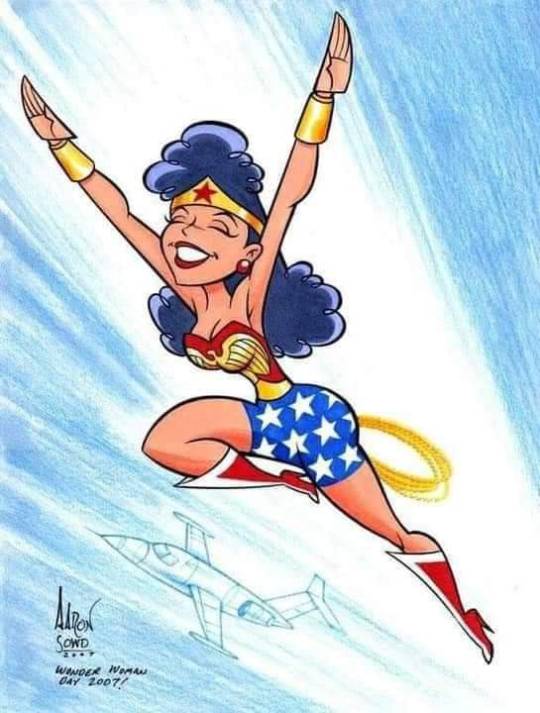
10 notes
·
View notes
Photo


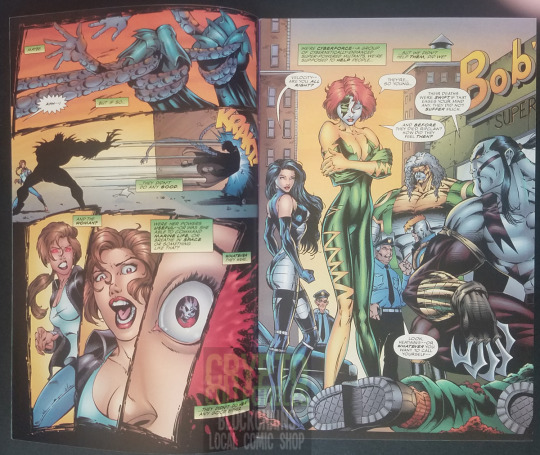
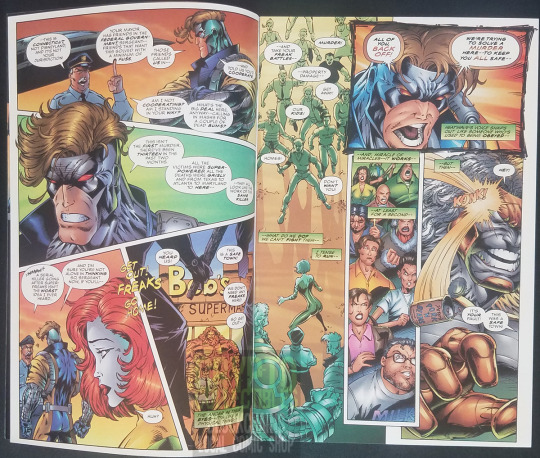
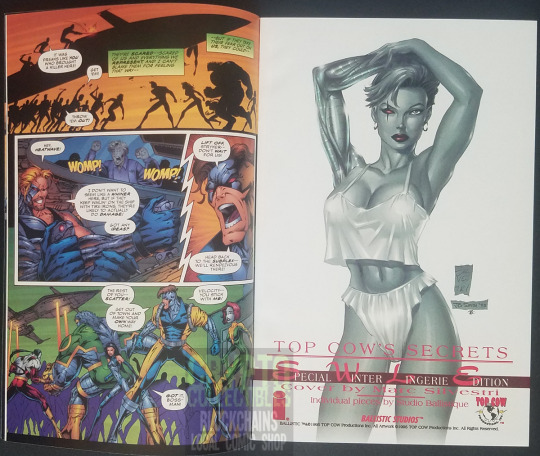

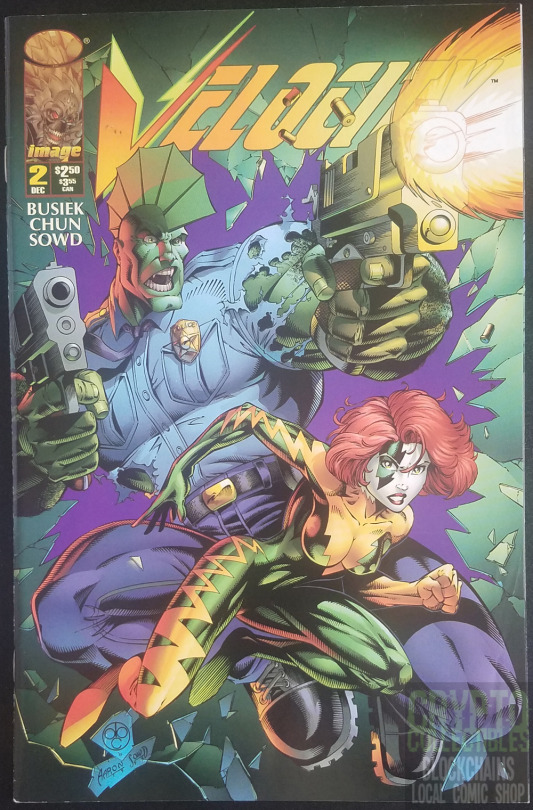
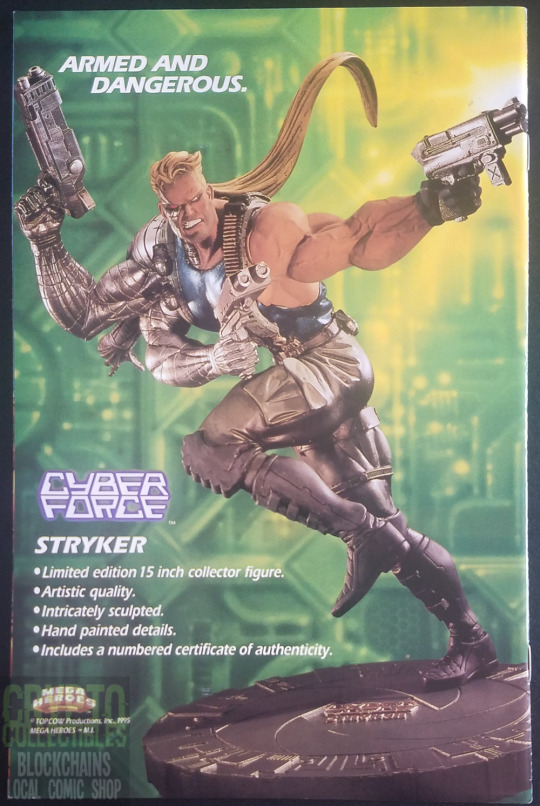
Velocity #1 & 2 (1995) by Image Comics
1 (November 1995) Written by Kurt Busiek, drawn by Anthony Chun and Aaron Sowd
2 (December 1995) Featuring Savage Dragon cover.
#Velocity#Image Comics#1995#Kurt Busiek#Aaron Sowd#Savage Dragon#Comic Books#Comics#Etsy#Vintage Comics#Cyberforce#Anthony Chun
7 notes
·
View notes
Photo
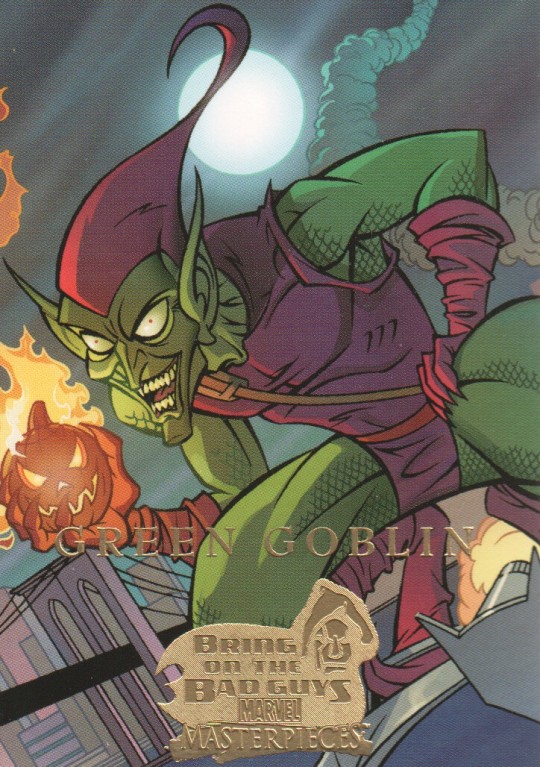
Marvel Masterpieces - Series 8 (2008)
#15 Green Goblin
38 notes
·
View notes
Photo
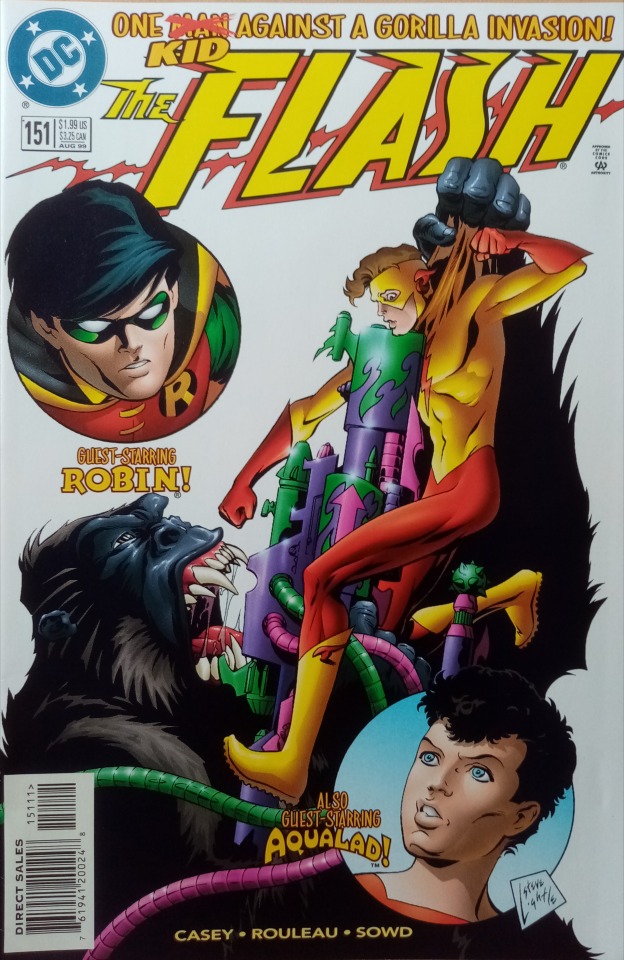
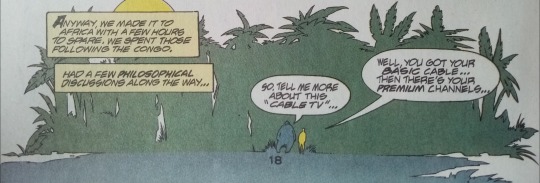
The Flash #151 (1999)
#DC comics#The Flash#Joe Casey#Duncan Rouleau#aaron sowd#gaspar#tom mccraw#Wally West#kid flash#and a gorilla who's name i don't remember
8 notes
·
View notes
Photo
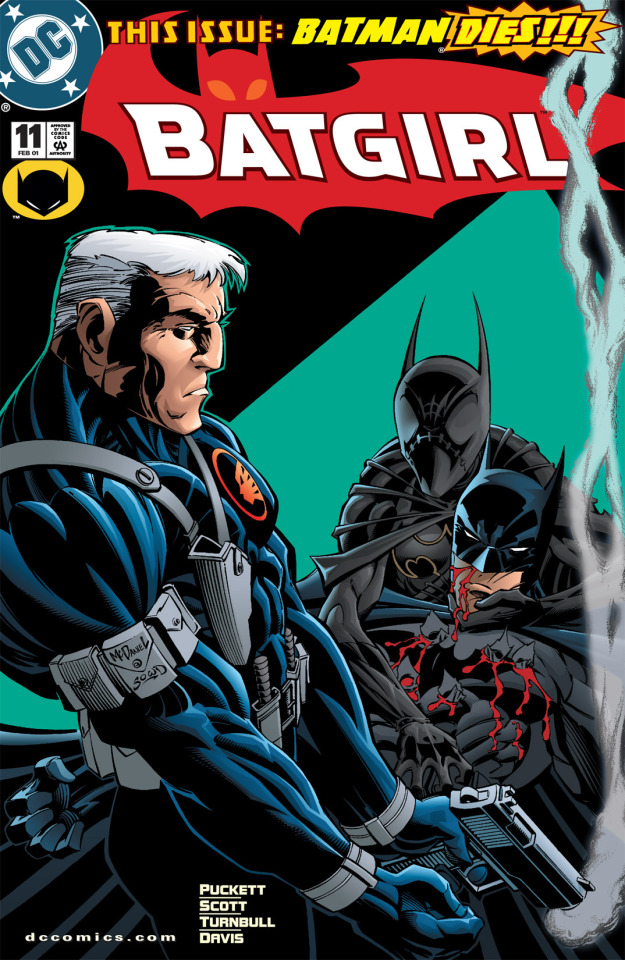
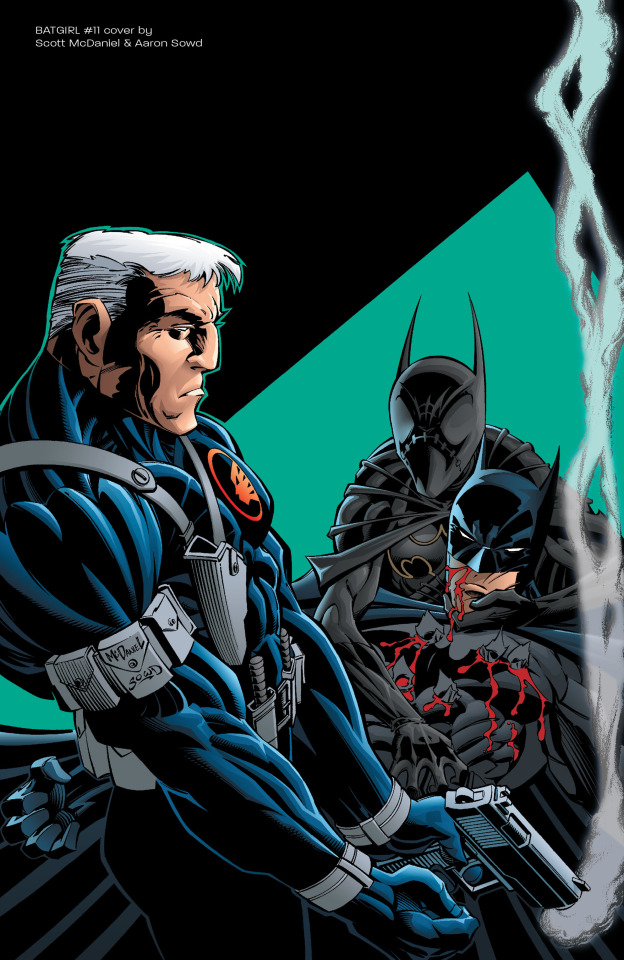
Batgirl #11 (February 2001) cover by Scott McDaniel and Aaron Sowd.
25 notes
·
View notes
Text
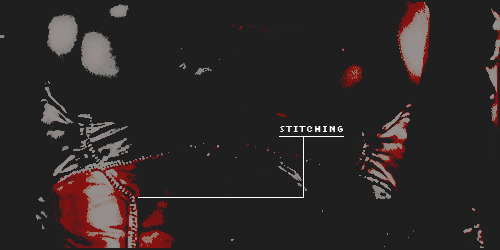
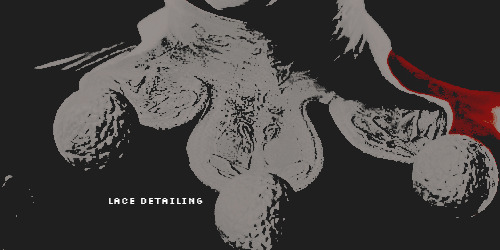
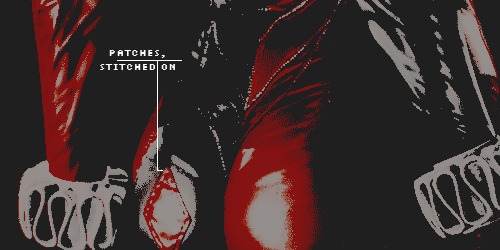
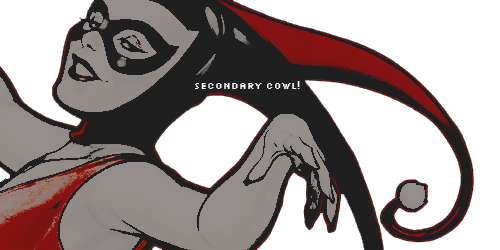
HEADCANONS for my harley's costume(s).
#♡ 。⠀𝙃𝙀𝘼𝘿𝘾𝘼𝙉𝙊𝙉𝙎!#SEE: ALT TEXT ! <3#arkham knight dlc went off truly ...#& of course#yvel guichet + aaron sowd :') ! !#big cowl is always such a win too
4 notes
·
View notes
Text
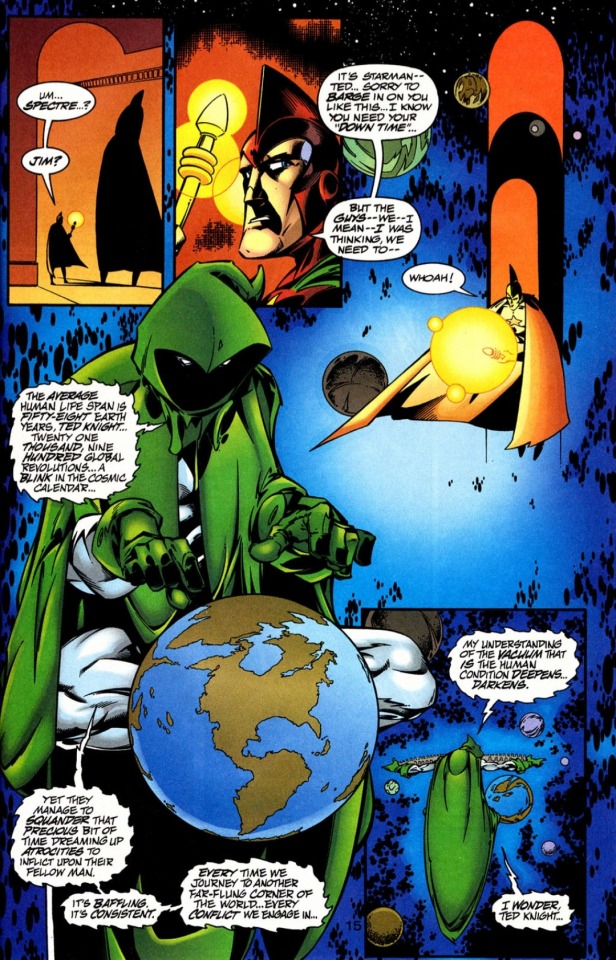
All-Star Comics 80-Page Giant #1
Writer: Joe Kelly
Artist: Duncan Rouleau
Inker: Aaron Sowd
Colors: John Kalisz
10 notes
·
View notes
Photo


Ultimate War #4
Writer: Mark Millar
Art: Chris Bachalo, Tim Townsend, Andy Owens, & Aaron Sowd
Colors: Paul Mounts
Letters: Chris Eliopoulos
#ultimate War#ultimate wolverine#James Howlett#snikt#mark millar#chris bachalo#Tim Townsend#andy owens#aaron sowd#paul mounts#Chris Eliopoulos#marvel comics#Ultimate Marvel
10 notes
·
View notes